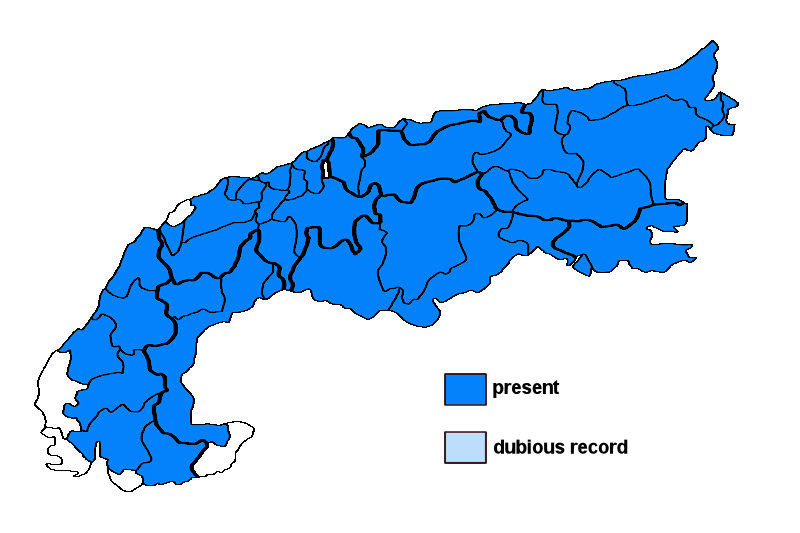Cladonia rangiferina (L.) F.H. Wigg.
Syn.: Cladina alpestris (L.) Nyl. non auct., Cladina rangiferina (L.) Nyl., Cladonia alpestris (L.) Rabenh. non auct., Cladonia gigantea (Bory) Abbayes, Cladonia vicaria R. Sant., Lichen rangiferinus L., Patellaria rangiferina (L.) Wallr.
Lichenised.
Substrate: acidic soil (mostly on siliceous substrata), calciferous soil, lignum
Altitudinal range: from the submediterranean/colline belt (potential vegetation: mixed deciduous forests dominated by Quercus and Carpinus) to the alpine belt (potential vegetation: treeless Alpine grasslands and tundras, to the lower limit of perennial snow and the equilibrium line of glaciers)
Note: a circumpolar arctic-alpine lichen, one of the most abundant elements of lichen-rich tundra-like vegetation on mineral soil in exposed habitats, with optimum near and above treeline; widespread throughout the Alps.
Austria: Vorarlberg; Tirol; Salzburg; Kärnten; Steiermark; Oberösterreich; Niederösterreich (incl. Wien); Burgenland; Germany: Oberbayern; Schwaben; Switzerland: Appenzell; Bern; Glarus; Graubünden; Luzern; St. Gallen; Schwyz; Ticino; Uri; Unterwalden; Vaud; Valais; France: Alpes-de-Haute-Provence; Haute-Alpes; Alpes-Maritimes; Isère; Savoie; Haute-Savoie; Italy: Friuli; Veneto; Trentino Alto Adige; Lombardia; Piemonte; Valle d'Aosta; Slovenia: Alpine and Pre-Alpine Slovenia; Trnovsky Gozd;





